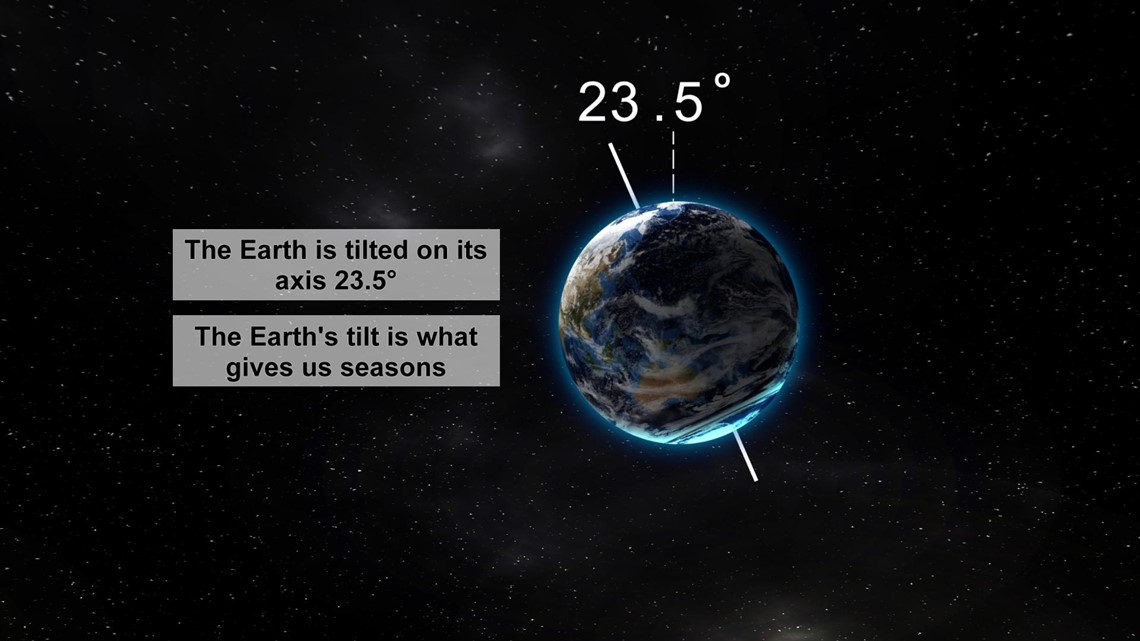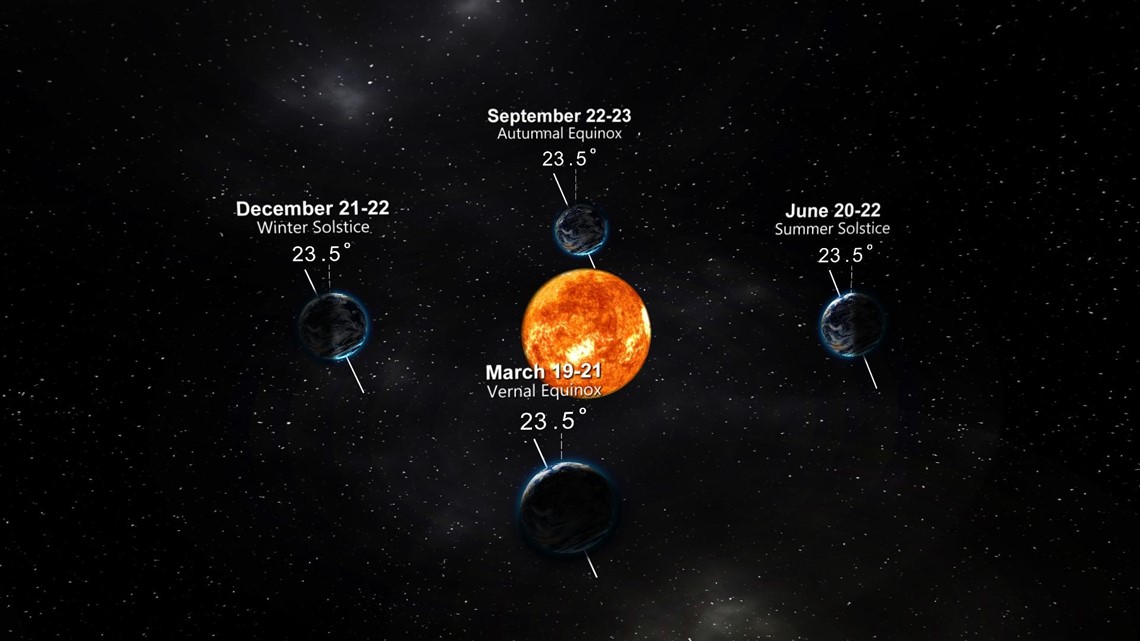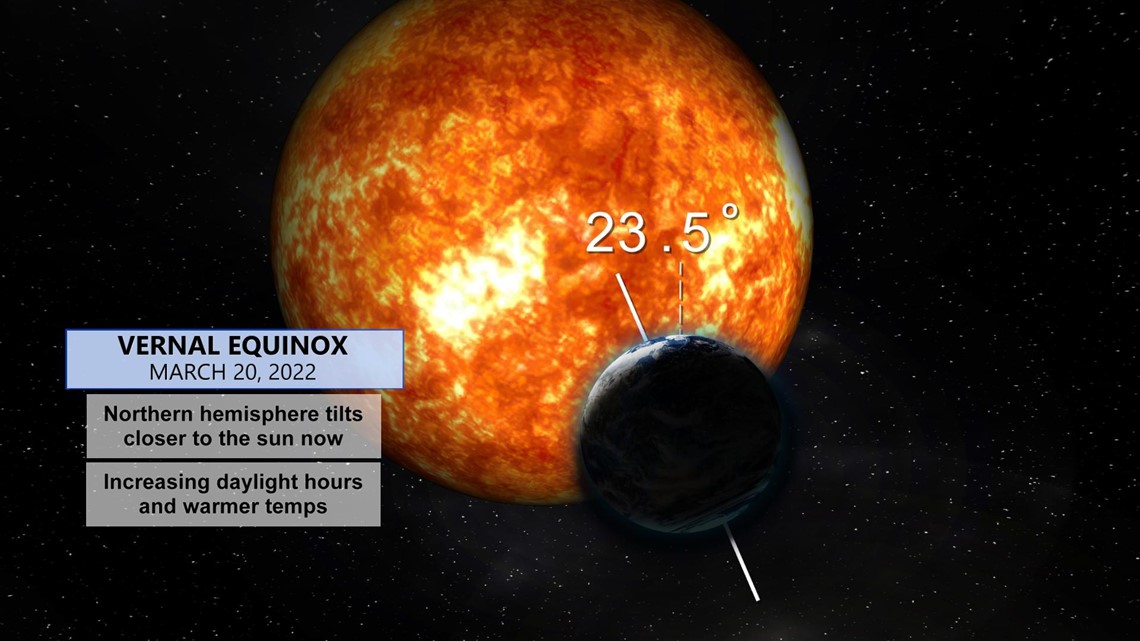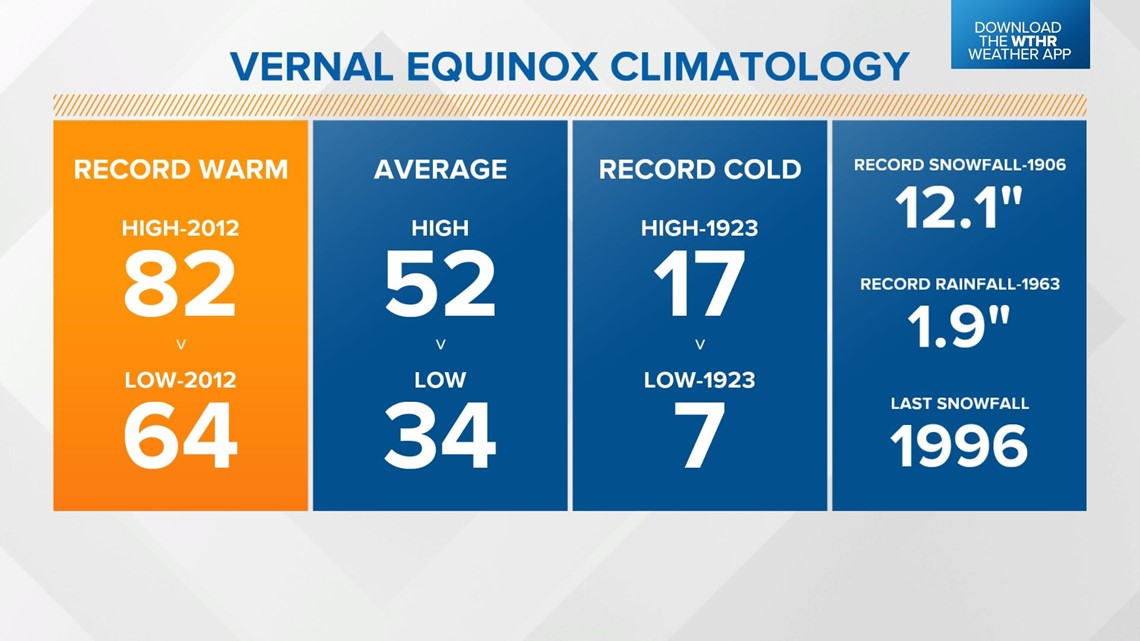INDIANAPOLIS — Today is the start of the spring season... also known as the March equinox or vernal equinox. So what exactly is happening to the earth that influences our weather?
First, we have seasons due to the earth's "tilt" which is 23 and a half degrees.


Throughout the year, as Earth revolves around the sun, different parts of the earth receive the Sun's most direct rays. So, when the North Pole tilts toward the Sun, it's summer in the Northern Hemisphere.
And when the South Pole tilts toward the Sun, it's winter in the Northern Hemisphere. Today, the earth hits a "neutral" tilt with respect to the sun marking the vernal equinox and the start of the spring season on the northern half of the globe.


After today, the Northern Hemisphere begins to be tilted more toward the Sun, resulting in increasing daylight hours and warming temperatures. It is also the day we see approximately 12 hours of daylight and 12 hours of darkness.


We'll continue to gain daylight through the summer solstice, which happens on June 20th. That's when the earth's axis points most toward the sun and we have the most daylight hours of any day of the year.
Some spring statistics for Indianapolis
- The record warmest first day of spring was 82 in 2012.
- The coldest low temperature was 7 in 1923.
- On average, we have a high of 52 and low of 34.
- The last time Indianapolis recorded snow on the first day of spring was in 1996.



